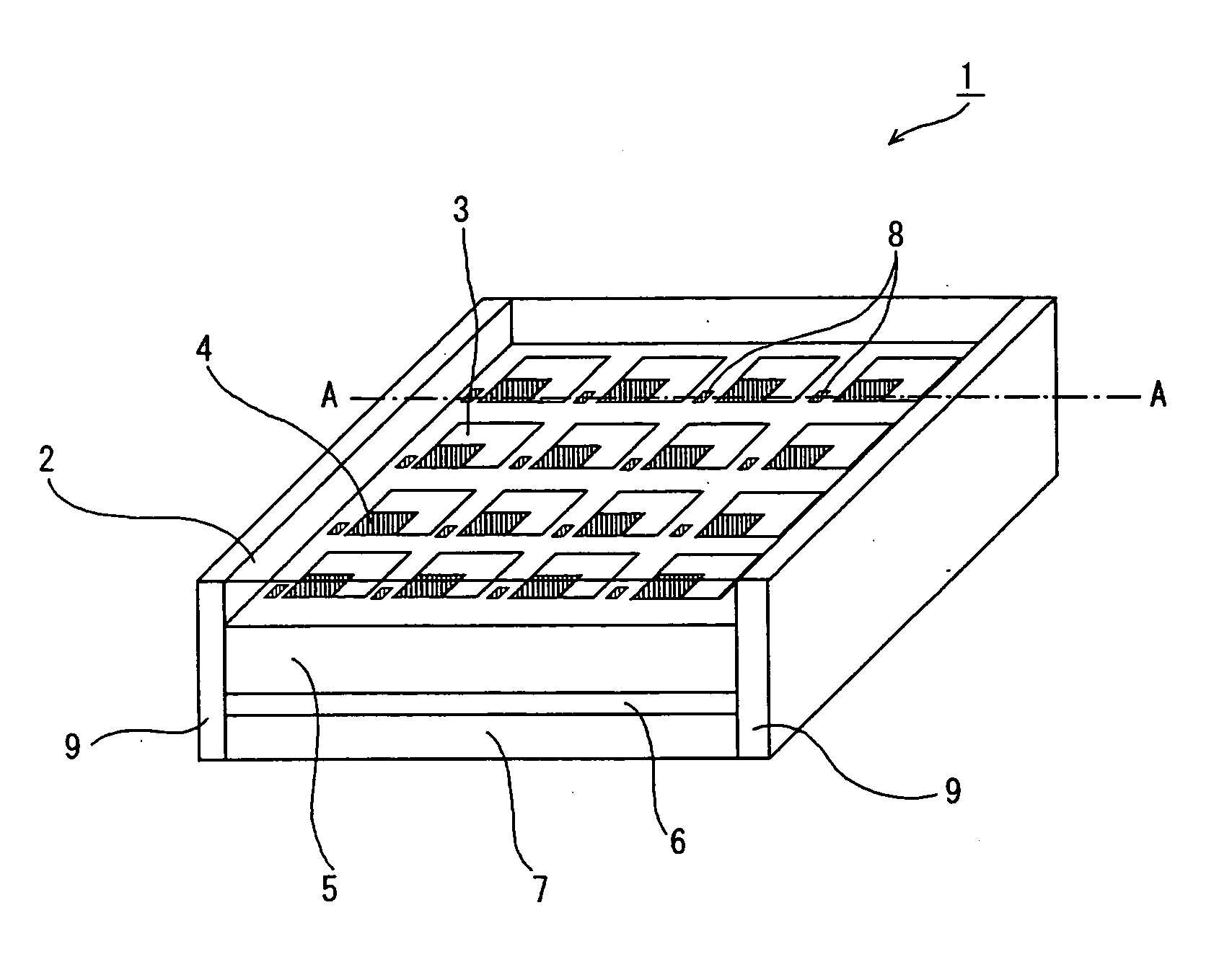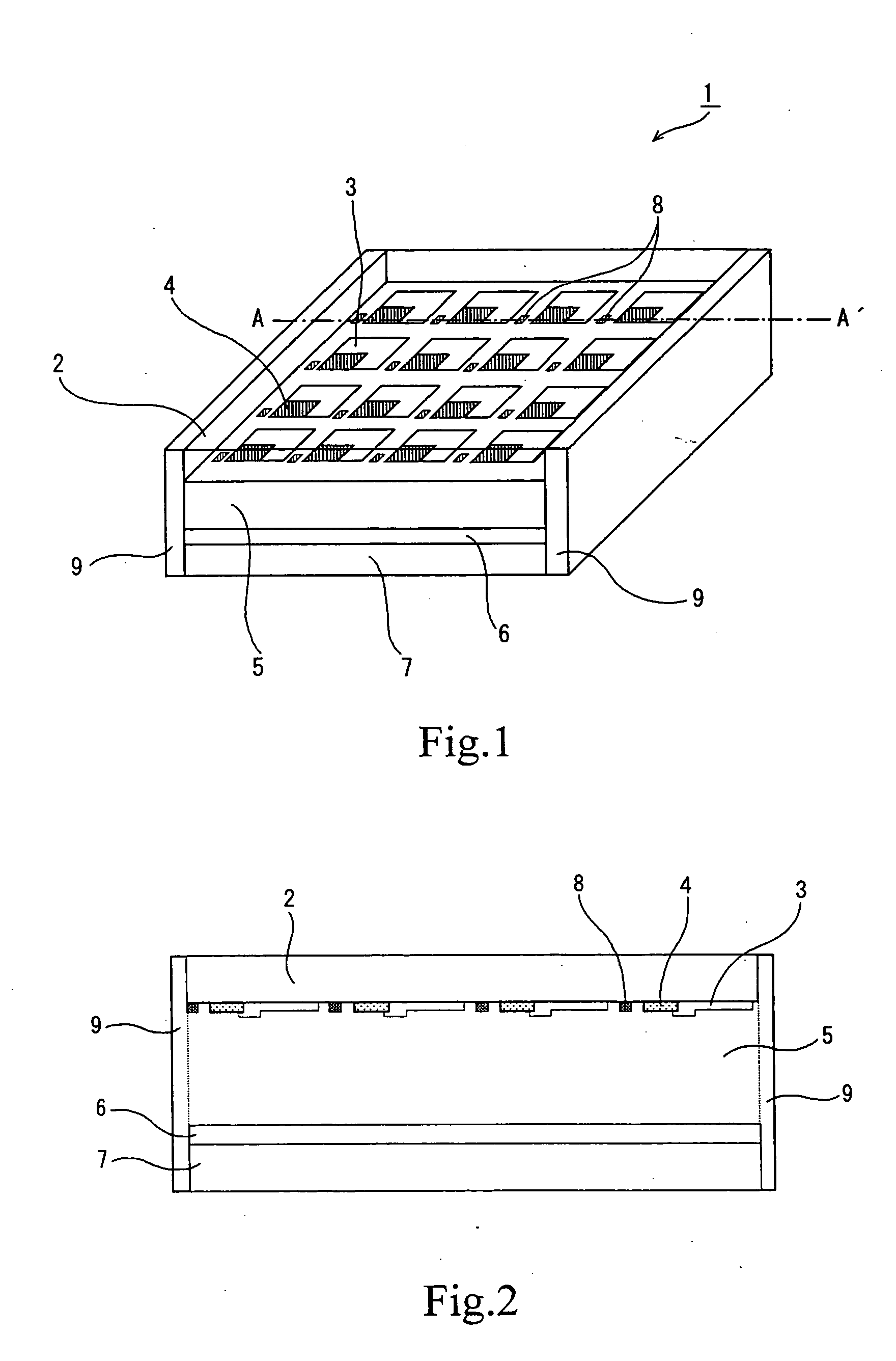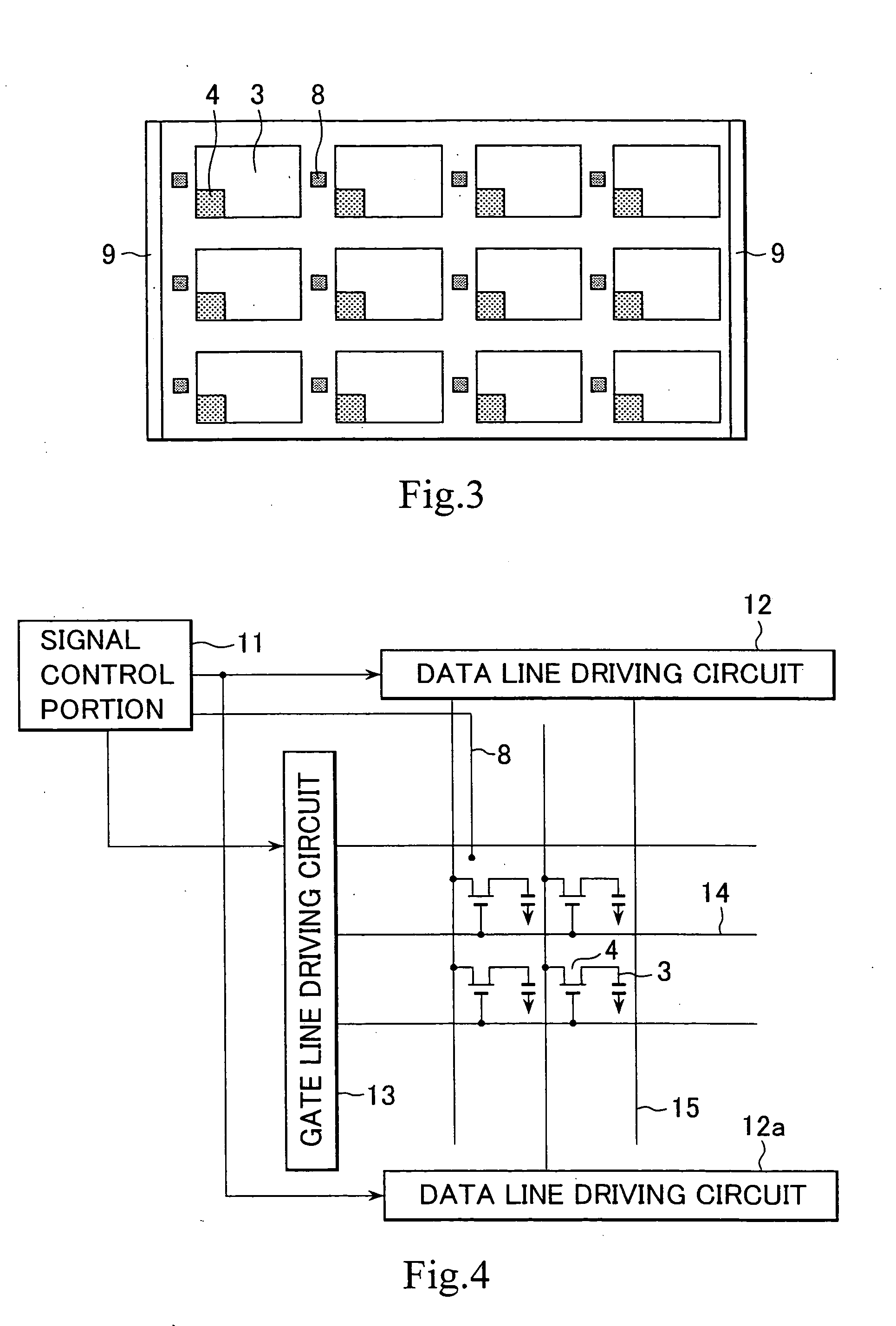Electrochemical display element and electrochemical display
a technology of electrochemical display and display element, which is applied in the direction of electrolysis components, electrolytic organic production, instruments, etc., can solve the problems of inability to use reading for several hours or longer, inability to read information at the place in which a computer is located, and long time reading difficulties
- Summary
- Abstract
- Description
- Claims
- Application Information
AI Technical Summary
Benefits of technology
Problems solved by technology
Method used
Image
Examples
first embodiment
[0188] The first embodiment is an example of the arrangement in which a third electrode 59 in a line form is arranged on the transparent picture element electrode substrate so as to surround the whole of the effective picture elements on the side of the transparent picture element electrodes 52 as shown in FIG. 21. The third electrode 59 is connected to third electrode withdrawal portions 60, 61, 62, 63. As shown in FIG. 22, on the transparent picture element electrodes 52, insulating layers 58 are formed so as to be perpendicular to the transparent picture element electrodes 52. At the portion on which the third electrode 59 is disposed, as shown in FIG. 23, the third electrode 59 is formed on the insulating layer 58. When the third electrode is arranged so as to surround the whole of the effective picture elements as described above, the opening ratio can be increased, making it possible to constitute an electrodeposition type display device having preferable light withdrawal effi...
second embodiment
[0189] The second embodiment is an example of the arrangement in which top and bottom third electrodes 59 in a line form are arranged, on the transparent picture element electrode substrate, in the direction parallel to the stripe structure of the transparent picture element electrodes 52 so that the whole of the effective picture elements are disposed between the two third electrodes as shown in FIG. 24. The top and bottom third electrodes 59 are connected, respectively, to third electrode withdrawal portions 60, 61 and third electrode withdrawal portions 62, 63. As shown in FIG. 25, on the transparent picture element electrodes 52, insulating layers 58 are formed so as to be perpendicular to the transparent picture element electrodes 52. When the top and bottom third electrodes are arranged so that the whole of the effective picture elements are disposed between the two third electrodes as described above, the opening ratio can be increased, making it possible to constitute an ele...
third embodiment
[0190] The third embodiment is an example of the arrangement in which right and left third electrodes 59 in a line form are arranged, on the transparent picture element electrode substrate, in the direction perpendicular to the stripe structure of the transparent picture element electrodes 52 so that the whole of the effective picture elements are disposed between the right and left third electrodes as shown in FIG. 26. The right and left third electrodes 59 are connected, respectively, to third electrode withdrawal portions 60, 63 and third electrode withdrawal portions 61, 62. As shown in FIG. 27, on the transparent picture element electrodes 52, insulating layers 58 are formed so as to be perpendicular to the transparent picture element electrodes 52. At the portion on which the third electrode 59 is disposed, as shown in FIG. 28, the third electrode 59 is formed on the insulating layer 58. When the two third electrodes are arranged so that the whole of the effective picture elem...
PUM
| Property | Measurement | Unit |
|---|---|---|
| reflectance | aaaaa | aaaaa |
| thickness | aaaaa | aaaaa |
| thickness | aaaaa | aaaaa |
Abstract
Description
Claims
Application Information
 Login to View More
Login to View More - R&D
- Intellectual Property
- Life Sciences
- Materials
- Tech Scout
- Unparalleled Data Quality
- Higher Quality Content
- 60% Fewer Hallucinations
Browse by: Latest US Patents, China's latest patents, Technical Efficacy Thesaurus, Application Domain, Technology Topic, Popular Technical Reports.
© 2025 PatSnap. All rights reserved.Legal|Privacy policy|Modern Slavery Act Transparency Statement|Sitemap|About US| Contact US: help@patsnap.com



